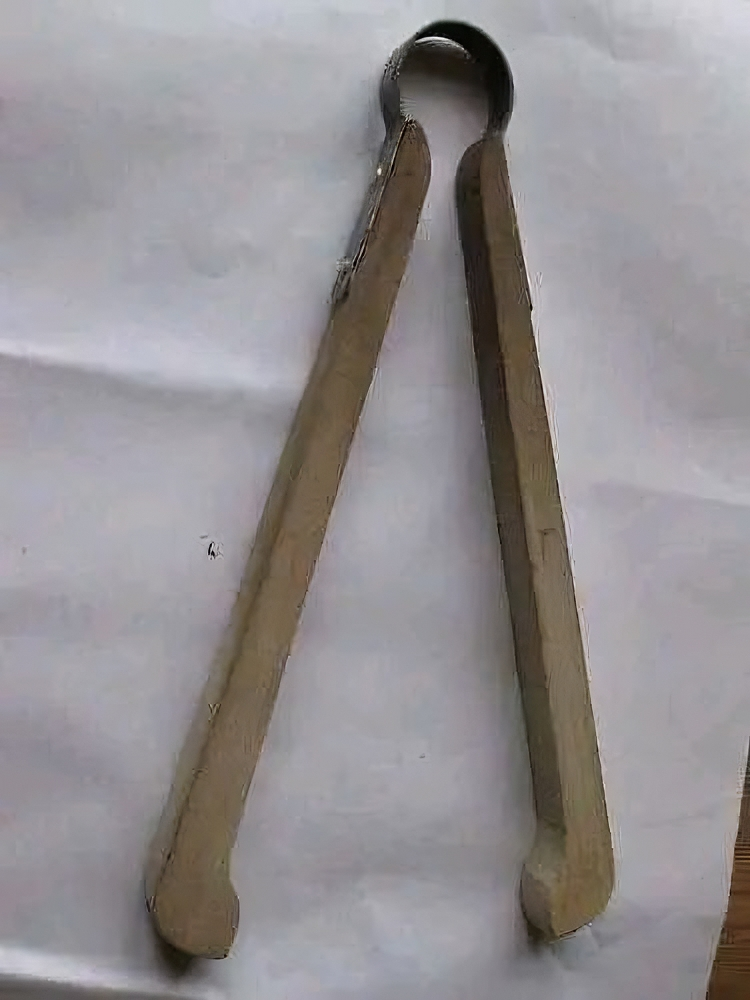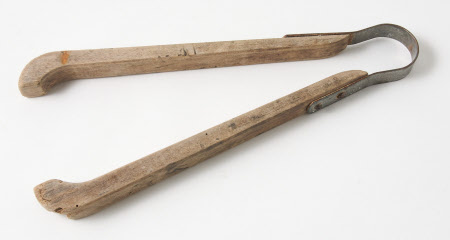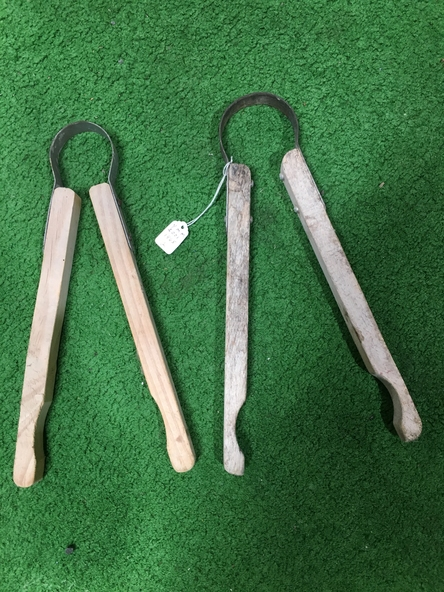In a world filled with modern laundry machines and high-tech gadgets, it’s easy to forget about the simple tools that once made laundry day bearable. One such tool is the washing tongs, a humble yet crucial instrument used to handle hot, wet laundry straight from boiling water or a copper tub. Imagine gripping scalding wet clothes with your bare hands—that’s where washing tongs came in handy.
Washing tongs may seem like an outdated tool, but their role in laundry history is significant. With two wooden pieces joined by a flexible metal strip and indented ends, these tongs were a must-have for anyone doing laundry the old-fashioned way. Let’s dive into the fascinating history, purpose, and design of these unique tongs, and uncover why they deserve a moment of appreciation.
A Brief History of Washing Tongs

The history of washing tongs can be traced back to the time when laundry was a labor-intensive chore involving large copper tubs filled with hot water. Before the invention of washing machines, people relied on washing tongs to safely handle hot, wet clothes.
- Origins and Evolution
Washing tongs date back to the 19th and early 20th centuries, a period when washing clothes involved manual labor and often included boiling laundry to remove dirt and bacteria. This method was commonly used before the widespread adoption of electric washing machines. - Purpose and Function
Washing tongs were specifically designed for safety and convenience. By using these wooden tongs, individuals could lift clothes from boiling water without risking burns. Washing tongs were particularly popular among households that used copper tubs to heat and wash their laundry.
Physical Characteristics of Washing Tongs
The design of washing tongs is straightforward yet highly functional. These tongs consist of two long pieces of light pine wood connected at the top by a flat, flexible metal piece, allowing them to pivot.
- Wood and Metal Construction
Typically made from pine wood, washing tongs are lightweight but sturdy enough to handle heavy, water-soaked fabric. The metal connector gives flexibility and allows the two wooden arms to grip items securely. This combination of wood and metal also ensured that the tool would not conduct heat, protecting the user’s hands from burns. - Indented Ends
The ends of each wooden piece are indented, allowing for a firm grip on wet laundry. This design made it easier to lift and maneuver heavy fabrics out of hot water without them slipping out of the tongs’ grasp.
The Role of Washing Tongs in the Laundry Process
In the days before modern conveniences, washing tongs were essential for several stages of the laundry process, particularly for boiling and wringing clothes.
- Handling Boiled Laundry
Since boiling clothes was a common practice to kill germs, washing tongs allowed users to safely lift clothes from scalding water. This tool reduced the risk of burns and made it easier to transfer clothes from the tub to a wringer or washboard. - Rinsing and Wringing
After boiling, clothes often needed to be rinsed in cooler water. Washing tongs were used to transfer the hot clothes into a rinse tub. Following this step, the laundry would typically be wrung out by hand or put through a manual wringer to remove excess water. - General Laundry Tool
Beyond handling hot laundry, washing tongs were also useful for sorting and transferring clothes. When washing multiple loads, these tongs prevented cross-contamination by allowing the user to handle clothes without direct contact.
Washing Tongs: A Testament to Ingenuity and Simplicity
Washing tongs may seem outdated today, but they serve as a testament to the ingenuity of early laundry tools. Like many other simple inventions, washing tongs were designed with a specific purpose in mind and were highly effective for their intended use. Despite their simplicity, they solved a real problem—handling hot, wet laundry safely.

The durability and efficiency of washing tongs illustrate the practicality and resourcefulness of household tools from the past. Even as modern washing machines take on the bulk of the laundry work today, washing tongs remain a symbol of the hard work and innovation of past generations.
Similar Tools and Their Role in Modern Life
While washing tongs are largely obsolete today, various types of tongs are still widely used for different purposes. Here are a few common types of tongs you might recognize:
- Kitchen Tongs
Used for flipping meat on the grill or serving salad, kitchen tongs are a staple in most homes. Unlike washing tongs, they’re typically made from metal or plastic and are designed to handle food safely. - Barbecue Tongs
Specifically designed for grilling, barbecue tongs have long handles to keep the user’s hands away from heat. They’re ideal for turning and moving large cuts of meat on the grill. - Ice Tongs
Commonly found in bars or at events, ice tongs have sharp ends designed to grip slippery ice cubes securely. While their use is less demanding than washing tongs, they serve a similar purpose in providing a safe way to handle objects.
The Cultural Significance of Laundry Tools

In many cultures, the tools used in everyday chores like laundry hold a special place in family life and tradition. Washing tongs, in particular, are a reminder of the labor-intensive tasks that past generations undertook daily. They reflect the values of hard work, resilience, and the inventive spirit of people who had to make do with what they had.
These tools are also a reminder of how far we’ve come. Today, doing laundry is as easy as pushing a few buttons, but it wasn’t always that way. Washing tongs and similar tools played a vital role in making these tasks more manageable.
Conclusion: Celebrating the Humble Washing Tongs
Washing tongs may seem like a relic of the past, but they have a unique place in the history of household chores. They remind us of a time when people had to rely on simple yet effective tools to make life easier. Today, they serve as a fascinating reminder of how innovation often starts with solving everyday problems.
So, next time you toss your laundry into a machine and press start, spare a thought for the washing tongs. These wooden tools helped countless people manage their laundry with ease, showing us that even the simplest tools can make a world of difference. From their sturdy wooden design to their practical purpose, washing tongs are an enduring symbol of resilience and ingenuity.


